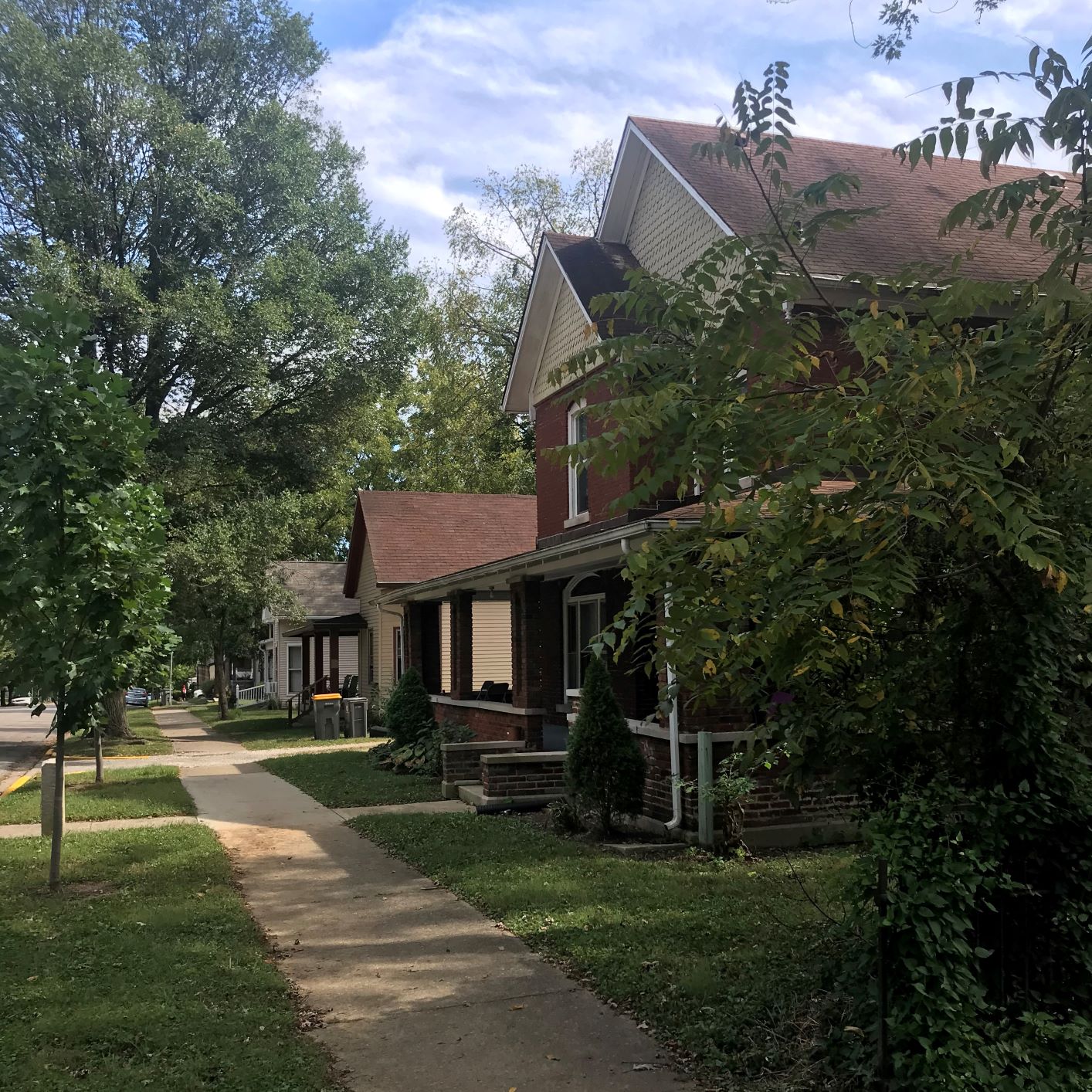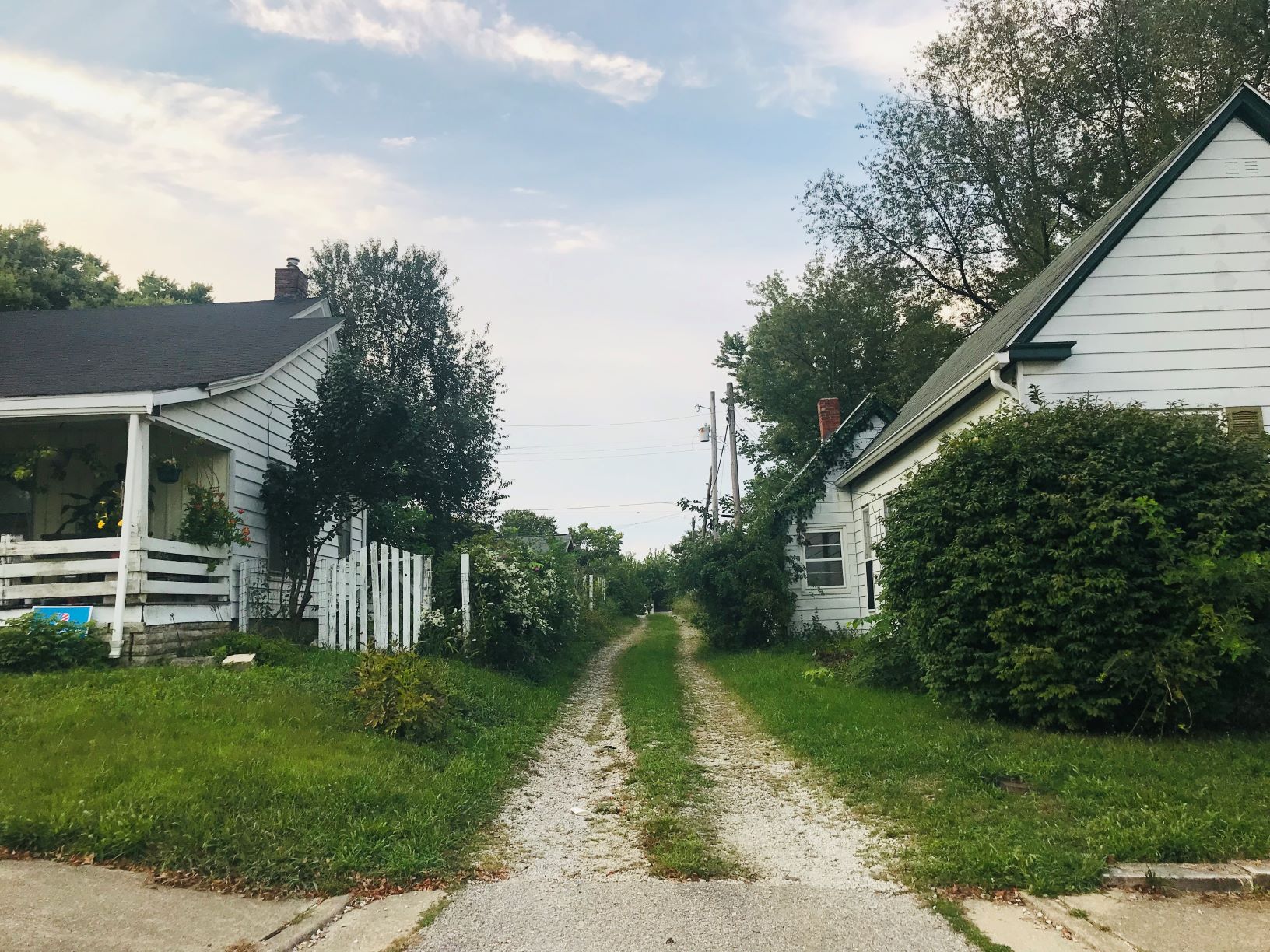Page last updated on November 2, 2020 at 2:10 pm
Bloomington's historic and conservation districts help preserve the city's rich history.
Cities are only successful when they work for everyone. People are at the center of our work. Preservation projects can create opportunities for community residents at all income levels to live, work, and play in a diverse and thriving environment.
Older places provide the distinctiveness and character that engender success. Older buildings give cities a sense of identity, history, and authenticity—which is the most important competitive advantage they can have in today’s economy.
Older neighborhoods are economic engines. Research shows that neighborhoods with a mix of older and newer buildings perform better along a number of social, economic, cultural, and environmental metrics than areas with only new buildings.
New ideas, and the New Economy, thrive in older buildings. All over America, the most innovative companies of the 21st century are choosing to make their homes in older buildings. These buildings fuel creativity by being distinctive, character rich, endlessly adaptable, and often low cost.
Preservation is adaptive reuse. Adaptive reuse is preservation. Historic preservation is not just about keeping old buildings around. It is about keeping them alive, in active use, and relevant to the needs of the people who surround them.
Preservation is about managing change. Healthy, dynamic neighborhoods are always in the process of change. Historic preservation is about managing change: unleashing the enormous potential of older buildings to improve health, affordability, prosperity, and well-being.
Cities are for people, not vehicles. Reclaiming city streets and making them more amenable to pedestrian and mass transit use can help neighborhoods reacquire activity and thrive once more.
The greenest building is the one that’s already built. It takes energy to construct a new building—it saves energy to preserve an old one. It simply does not make sense to recycle cans and newspapers and not recycle buildings.
There are many ways to achieve density. Areas with a mix of older and newer fabric tend to be denser than new-only neighborhoods, and they achieve that density at a human scale.
Every community has stories and places that matter. The places worth saving are those where communities choose to come together and that represent the local stories they treasure and wish to see preserved.
How to Apply for Local Designation
An application form is available at the link below or can be picked up at the Office of Housing and Neighborhood Development.
Both Conservation and Historic districts must meet the same criteria for designation. First, the proposed area must be surveyed and documented for historic resources. Ask the Program Manager for Historic Preservation whether this has been completed. The application includes the requirement of three public information sessions that serve to educate residents and owners about the requirements of district status. An ad hoc committee of owners, commissioners and the council person who represents the area will oversee the creation of design guidelines. They also select the final boundaries of the proposed district. This continued discussion allows all owners to participate, ask questions, and voice concerns.
Upon completion of the application form (including the addresses and classifications of buildings from the survey and a short history of the district), the proposal is forwarded to the Historic Preservation Commission for review. At this point owners of properties will be formally notified of the public hearing. If approved, the Commission's recommendation is sent to Common Council where there are two more opportunities for public comment before the final vote.
While the application process is the same for both conservation and historic district, a key difference is observed between the two. Unlike a historic district, conservation district owners participate in a referendum before the third anniversary of the district's adoption. Each owner will be asked whether they object to elevation to a full historic district. If a majority object in writing, then the district continues as a conservation district. If a majority does not object, then the district becomes a full historic district.
Timeline
1. Complete Survey (inquiry whether this has been completed already)
2. Begin to educate owners, by newsletter or mailing
3. Establish interest, by petition or letter from Neighborhood Association
4. Form Ad Hoc Committee with Commission
5. Complete three Public Information Meetings
6. Complete application (with staff)
7. Historic Preservation Commission Public Hearing
8. Common Council Hearings
9. District referendum before third year anniversary (Conservation districts only)
For more information on current local conservation and historic districts, please follow the link below.
Required Meetings
The Bloomington Commission meets on the second and fourth Thursday of every month. Two meetings are required for local designation, one for the Commission to consider the merit of the property, and the public hearing itself which must be noticed in the newspaper, and to the owners and all adjacent owners.
At the public hearing, the Commission may vote to recommend designation to Common Council based upon historic criteria. The Commission prefers to hold a very informal meeting but the process of the hearing follows predictable steps.
- Staff report
- Question for staff
- Owner's discussion
- Questions for owner
- Public Comment
- Commission discussion and action
If historic designation is recommended, then a report and map are sent to the Common Council.
The ordinance creating the local historic district is considered at three Common Council meetings. Public participation is solicited during the committee of the whole and final action. The district is implemented only after Council votes its approval and the Mayor signs the ordinance into law.
Criteria for Designation
Any property or district considered for local historic designation should be 50 years old and must meet at least one of the following criteria:
Historic:
a. Has significant character, interest, or value as part of the development, heritage, or cultural characteristics of the city, state, or nation; or is associated with the life of a person significant in the past; or
b. Is the site of a historic event with a significant effect upon society; or
c. Exemplifies the cultural, political, economic, social, or historic heritage of the community
Architecturally worthy:
a. Embodies those distinguishing characteristics of an architectural or engineering type; or
b. Is the work of a designer whose individual work has significantly influenced the development of the community; or
c. Is the work of a designer of such prominence that such work gains its value from the designer's reputation; or
d. Contains elements of design, detail, materials, or craftsmanship which represent a significant innovation; or
e. Contains any architectural style, detail, or other element in danger of being lost; or visual feature of a neighborhood or the city; or
f. Owing to its unique location or physical characteristics, represents an established and familiar visual feature of a neighborhood or the city; or
g. Portrays the environment in an era of history characterized by a distinctive architectural style
Benefits/Incentives of Historic Designation for Neighborhoods and Property Owners
- Catalyze neighborhood associations
- Increase property values
- Foster homeownership
- Preserve Bloomington for everyone
- Develop a network of assistance
The Bloomington Historic Commission members are acknowledged as some of the most professionally accomplished in the state. Their expertise in historic research, real estate, construction, design, and materials acquisition can help you make the best choices to preserve your historic property.
Assistance in the Preservation of Your Property
The Historic Commission's role is to review any proposed changes to the exterior of a property listed on the local register. This ensures that those elements of the building that are significant to its character are preserved and its historic value is guaranteed.
Leverage a Greater Voice in the Community
A historic district designation gives your neighborhood an advantage in the competitive process of grant application and creates an identifiable voice in community affairs. Funds for appropriate signage, lamp posts, historic sidewalk repair are available through local, state, federal and nonprofit grants and low-interest loans targeted for historic properties.
Build Community Identity
Bloomington's historic and conservation districts help preserve the city's rich history. Prospect Hill Historic District was placed on the local register in 1991. Since that time, many of the houses in the district have been restored, increasing property values and enhancing the neighborhood's unique identity. A strong neighborhood association has taken a leadership role in public affairs and developed innovative projects to further the theme of historic preservation within its boundaries.
Find out if your property is eligible for local designation. A copy of the Indiana Historic Sites and Structures Inventory Interim Report is available in the HAND office.
National or State Designation
Purpose
The National Register of Historic Places Places recognizes properties the federal government considers worthy of preservation because of their significance in American history, architecture, archaeology, engineering, or culture.
In Indiana, National Register listings range from the prehistoric Angel Mounds in Vanderburgh County to a mid-twentieth-century neighborhood in Carmel. The list includes private homes and courthouses, commercial buildings and factories to date nearly 2,000 individual sites and more than 270 historic districts.
A program of the National Park Service of the U.S. Department of the Interior, the National Register is administered on the state level by the Division of Historic Preservation and Archaeology (DHPA) of the Indiana Department of Natural Resources.
The primary benefit of listing in the National Register is the honor conferred by official federal recognition. When a site is added, the listing appears in the Federal Register, and the owner receives a letter and certificate.
Learn more
- National Register of Historic Places Website
- Indiana DNR: Find information for Historic Property Owners


